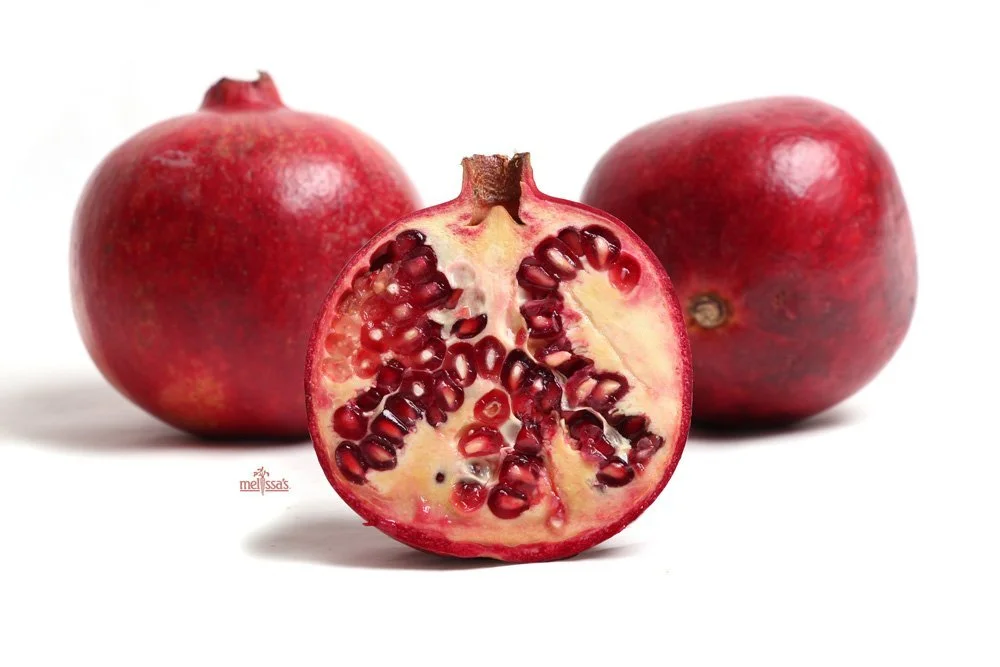Pomegranates
A pomegranate is a deciduous shrub that bears fruit, growing from five to eight meters high.
History
In China, pomegranates symbolize longevity. Ancient Persians thought it made their warriors invincible.
Culinary Uses
Pomegranates can be consumed as a whole fruit or in the form of juice.
Medicinal Uses
The bark, peel, and leaves of pomegranates have been used in treating digestive problems like diarrhea. The leaves are used for making a tea that has helped alleviate these disorders. Pomegranate juice has been used to treat problems like dysentery and cholera.
Regular intake of pomegranate juice, reduces the formation and negative effects of dental plaque.
Pomegranate juice is believed to lessen risk factors for heart disease by reducing systolic blood pressure and discouraging blood platelets from clumping.
In Season
In the Northern Hemisphere, pomegranates bear fruit from September to February.
In the Southern Hemisphere, pomegranates bear fruit from March to May.
Nutrition
Pomegranate is believed to have antiviral, antioxidant, and anti-tumor properties.
Pomegranates are a good source of Vitamin C, Vitamin K, folate (folic acid), and fiber.
1 Pomegranate (raw)
* Calories 234
* Total Fat 3g
* Saturated Fat 0g
* Trans Fat 0g
* Cholseterol 0mg
* Sodium 8mg
* Total Carbohydrate 53g
* Dietary Fiber 11g
* Sugars 39g
* Protein g
* Vitamin A 0%
* Vitamin C 48%
* Vitamin K: 58%
* Folate: 27%
* Calcium 3%
* Iron 5%

